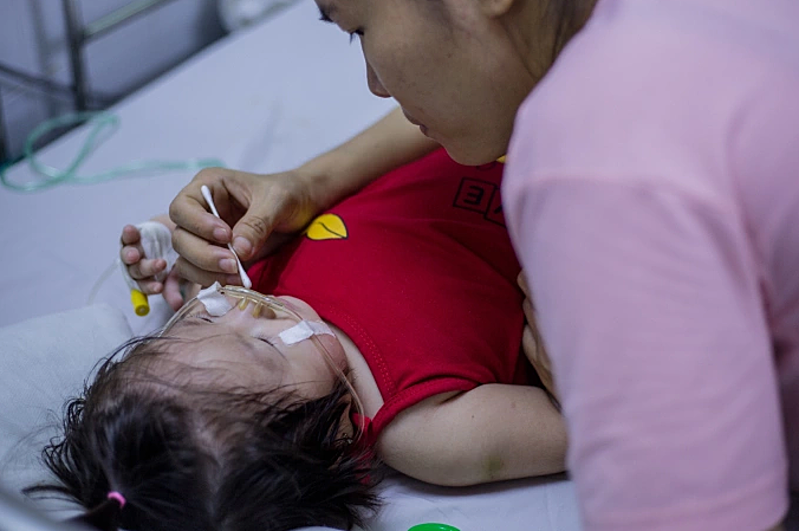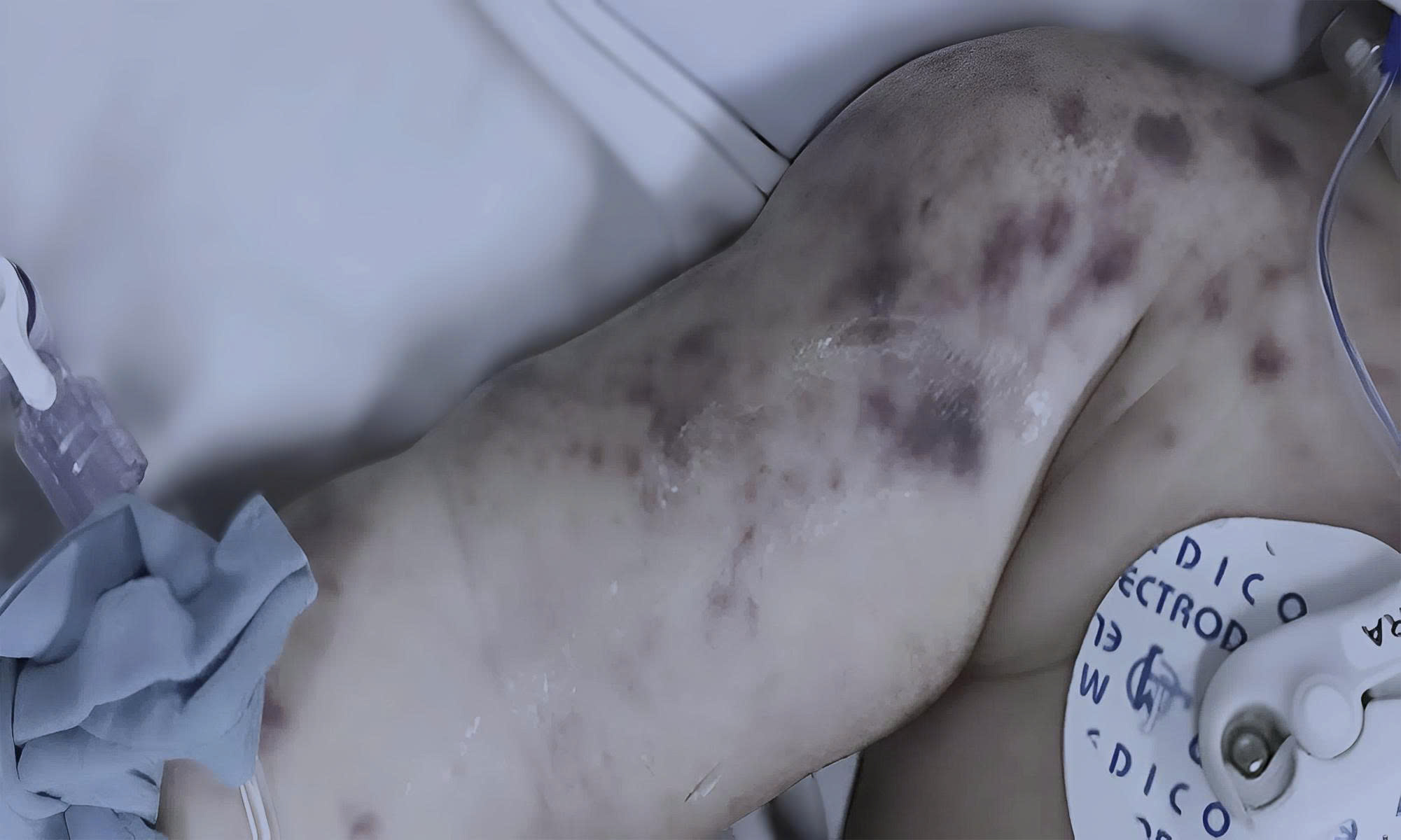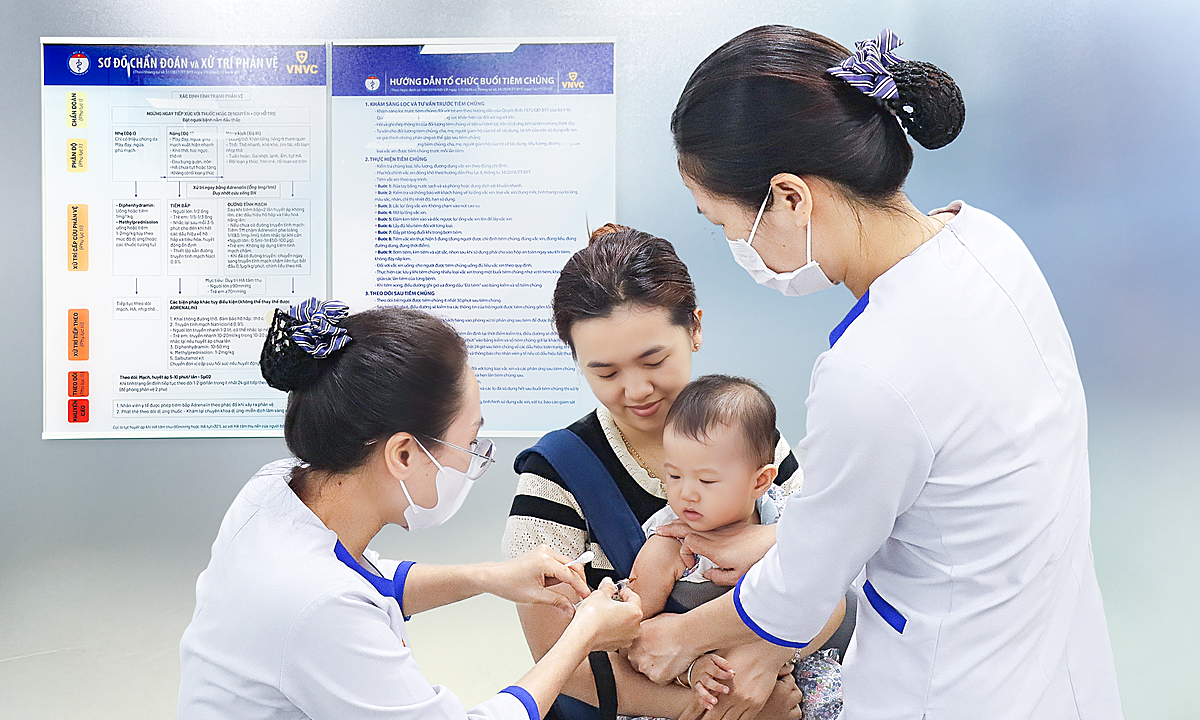Meningococcal disease is an acute infectious disease caused by the bacterium *Neisseria meningitidis*, according to Dr. Nguyen An Nghia, deputy head of the Department of Infectious Diseases and Neurology at Children's Hospital 1 in Ho Chi Minh City. The most serious and common forms are meningitis and septicemia, which can progress rapidly within hours, potentially leading to death.
 |
A child receiving treatment at Children's Hospital 1. *Photo: Thanh Nguyen* |
Dr. Nghia explained the disease's mechanism: in fulminant meningococcal disease, the bacteria evade the immune system and complement system after entering the bloodstream. They release potent toxins, triggering systemic inflammation, damaging blood vessels, causing tissue necrosis, and leading to multiple organ failure, including kidney and respiratory failure. The disease progresses through three stages within the first 24 hours: vague symptoms like headache and fever; followed by a rash and stiff neck; and finally, seizures and loss of consciousness.
"The characteristic rash may not always appear, and initial symptoms can be vague and easily mistaken for other illnesses, such as high fever, headache, and nausea," Dr. Nghia said, "making early detection difficult and potentially delaying crucial treatment."
In fulminant septicemia, death can occur within 6-8 hours without prompt treatment. Even with intensive care, the mortality rate remains between 10% and 19%. Among survivors, 20% to 50% experience lifelong disabilities, including limb amputation, skin grafts, dialysis, seizures, epilepsy, vision or hearing loss, and neurological disorders.
Dr. Nghia described a case at Children's Hospital 1 involving a child diagnosed with meningococcal septicemia and meningitis. The child's symptoms began only 10 hours before admission, starting with coughing and difficulty breathing. Upon arrival, a few small hemorrhagic spots appeared on the child's chest, but within 2-3 hours, respiratory failure and shock developed. Although the child survived with intensive treatment, they suffered severe consequences, including amputation of both legs and removal of some finger joints.
 |
Rash on an 8.5-month-old patient with meningococcal disease treated at Children's Hospital 1. *Photo: BSCC* |
The cost of treating a severe case of meningococcal disease can reach hundreds of millions of Vietnamese dong (tens of thousands of USD), in addition to the long-term burden of care. For example, children with amputations require lifelong assistance, while those with hearing loss or brain damage may experience intellectual disabilities, impacting their education and future.
Due to its severity and significant burden, the Ministry of Health classifies meningococcal disease as a Group B infectious disease, recommending case surveillance, regular prevention, and community spread control.
According to Dr. Nghia, meningococcal disease primarily spreads through respiratory droplets during close contact in enclosed spaces with carriers or by touching the eyes, nose, or mouth after contact with contaminated surfaces.
While it can affect all ages, it's most common in children under 5, adolescents in crowded settings like daycare centers, schools, dormitories, and barracks, and older adults or those with weakened immune systems. The bacteria often reside asymptomatically in the nasopharynx, a phenomenon known as carriage.
According to the Department of Preventive Medicine (Ministry of Health), the carriage rate in the community ranges from 5% to 25%, and is higher in outbreak areas. Vaccination is one of the most effective preventive measures.
 |
Parents bring their children for meningococcal vaccination at VNVC. *Photo: Moc Thao* |
Dr. Bach Thi Chinh, medical director of the VNVC vaccination system, stated that Vietnam currently offers vaccines against the five common meningococcal serogroups (A, B, C, Y, and W), protecting children from 6 weeks old and adults. These vaccines include: three types against serogroups A, C, Y, and W-135 from Sanofi and Pfizer (the earliest can be administered at 6 weeks old); a vaccine against serogroup B from GSK (for ages 2 months to 50 years); and a vaccine against serogroups B and C from Cuba (for ages 6 months to 45 years).
Vaccines are available at private vaccination centers. In addition to reducing morbidity and mortality, vaccines have also been shown to reduce carriage.
Dr. Chinh advised that meningococcal vaccines do not offer cross-protection, so individuals should receive a combination of serogroup B and A, C, Y, W vaccines for comprehensive protection. The choice of vaccine and schedule should be based on vaccination history, epidemiological situation, age, and individual needs.
In addition to vaccination, people are advised to maintain hygiene at home and work; practice personal hygiene by frequently washing hands with soap and water, and covering their nose and mouth when coughing or sneezing. People should wear masks when sick, in close contact with someone showing symptoms, or in crowded places, including hospitals. Close contacts of meningococcal patients should notify local health officials for preventive guidance.
Gia Nghi












